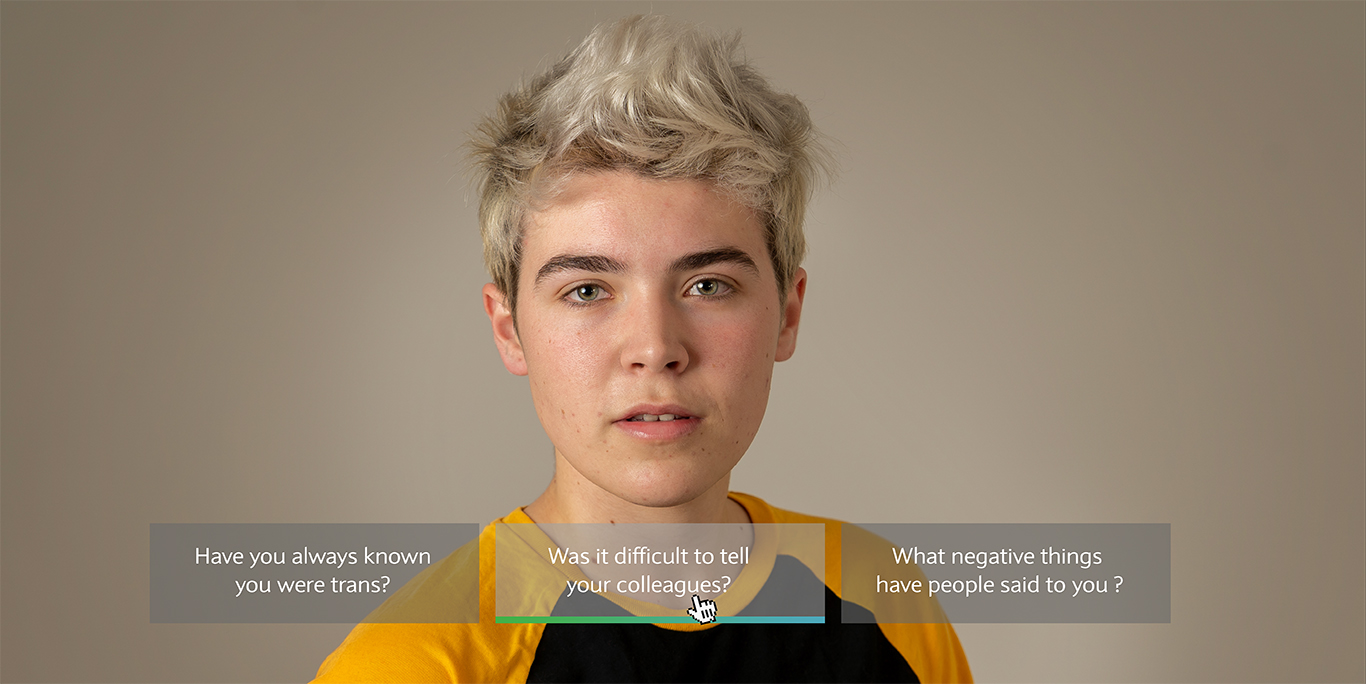Filmmaking during a global pandemic
26 Mar 20
Social distancing as it goes is a fairly simple thing for a digital agency: Laptops… check… Adobe Suite… check… Slack, Google Hangouts, Harvest… check, check, check
OK… film shoot next week; interviewees flying in from Hong Kong and France… Ah [deep breath], time for a rethink.
Filmmaking is processing it’s own unique set of challenges within the tsunami that is Covid-19, and in the short-term at least, the industry must adapt to a new normal. So how do you make films without going out to a film shoot, or without the talent even leaving their home? Funnily enough, we’ve been doing quite a lot of this already. And if the overwhelmingly positive feedback from our clients is anything to go by, we’re actually quite good at it.
Let’s take a look at at some of our recent film projects:
Ask me a question: Interactive D&I films
As part of a D&I behavioural change programme for a worldwide energy company, we’re currently creating an interactive experience that allows people to ask the questions that they may in ‘real-life’ shy away from, such as, “Should I say he or she?”, or “Is it better if I speak to you slowly?”. The aim is to allow you to walk in people’s shoes and gain a much deeper understanding of the challenges that some of us face.
The films feature employees from around the world, who’ve faced D&I challenges. We filmed them via Google Hangouts.
To the end-user, the finished experience feels like a naturally flowing video call with the interviewees – complete with VoIP UI design, and ambient loops, where there are pauses in conversation. You choose the questions to ask each person as the conversations progress and receive truly genuine answers in return, making you really think about – and question – your own assumptions.
Simple, powerful, effective.
Future mindset : Global voices via Webex
We’ve just finished a series of high-production-value films for an international bank about achieving the right mindset to stay technologically ahead of the game.
Originally the films were to feature talking-head interviews with diverse colleagues across the planet, giving a unified global voice. Historically, we’ve been lucky enough to film this client on-location in many different countries, but a recent (non-coronavirus related) travel ban threw a huge spanner in the works.
Still, at Tilt we always love a challenge.
The solution was to capture the interviews as Webex audio recordings – making a thing of this, rather than trying to hide it. It transforms a logistical restriction into a positive advantage, offering the widest number of voices across the planet, at a fraction of the cost, and with a real feeling of authenticity.
But we’re filmmakers, right, so what about the visuals? Driving the narrative is a carefully curated collage of cinematic footage, bringing words to life, through metaphor, swiftly pulled together from both our own footage library and from our favourite stock providers. We’re not talking shiny catalogue models with cheesy grins, bathed eternally in sunshine. It’s about knowing what is good, what is not, and weaving it all together to take people on a journey, as a DJ mixes a banging set.
Frontline AIDS: WhatsApp audio and visual metaphor
Similarly, we applied this concept when working with the charity, Frontline Aids. The goal was to help communicate the severity of the situation among marginalised people living ‘below the line’, whose lives are still very much affected by the disease.
We interviewed patients from all corners of the globe, their voices shining a light on some of the severe challenges people face at the frontline of the ongoing HIV epidemic.
The voices themselves have such power, and we opted for a simple visual treatment to drive the narrative, while ensuring that these words remained the key focus. Our treatment uses the metaphor of submersion (below the line) in water, filmed using a bespoke motion-controlled 120-litre water stage to create a variety of movements, caustics and textures. A crew of one, minimal face-to-face interaction, yet a particularly powerful and impactful piece.
What I wish I knew: User-generated films
We have made a set of user-generated films for one of the Big Four, aimed at new joiners, as a part of a wider learning portal. There was a sense within the company that new joiners weren’t being adequately supported. Responding to this need, Tilt created a comprehensive digital experience – with a ‘pull’, not ‘push’, approach – that provides useful resources to the target audience.
Back to the films. We sent out a film briefing pack to lots of new colleagues, who are already one year in, and asked them, “What do you wish you’d known when you started?” Everything was self-filmed on people’s phones in a smartphone-friendly vertical format. Footage was uploaded to a secure FTP server, and we crafted the films from there, mixing up UGC footage with B-roll that we have previously gathered, and a smattering of stock.
The project has since gone on to win many awards, including the prestigious Digital Impact Awards ‘campaign of the year’.
Moving forward, it looks like this surreal and unsettling situation might be here to stay for a while. But we see this as an opportunity for filmmaking to adapt, rather than to lose its way. Whether it’s finding new ways of creating films through remote technology or adopting new techniques of running shoots, people are going to need a great deal more digital support and encouragement as the weeks and months progress. And at Tilt, we relish every opportunity to hit a challenge head-on… and flip it into a beautiful, creative solution.
Lights, webcam, action!

SHARE: